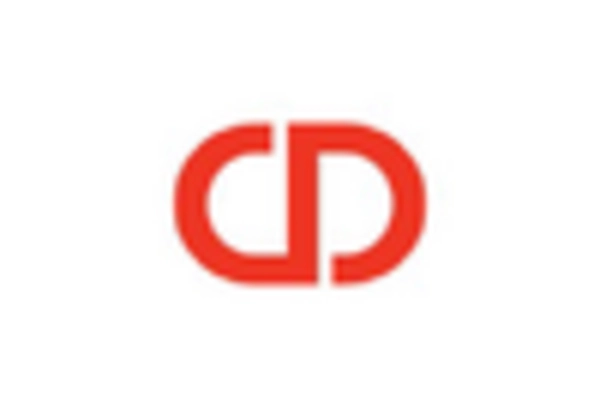Regulatory Compliance and Standards
The Healthcare Architecture Market is increasingly influenced by stringent regulatory compliance and standards. Governments and health organizations are establishing guidelines to ensure safety, accessibility, and quality in healthcare facilities. This regulatory environment compels architects to design spaces that not only meet functional requirements but also adhere to health and safety codes. For instance, the implementation of the Americans with Disabilities Act (ADA) in the United States has necessitated modifications in design practices to accommodate individuals with disabilities. As a result, architects are required to stay abreast of evolving regulations, which can drive innovation in design solutions. The emphasis on compliance is likely to shape the future of healthcare architecture, as facilities strive to create environments that are both compliant and conducive to patient care.
Patient-Centered Care and Experience
The Healthcare Architecture Market is increasingly focused on patient-centered care, which emphasizes the importance of the patient experience in healthcare settings. This approach advocates for designs that promote comfort, accessibility, and healing environments. Research shows that well-designed healthcare facilities can enhance patient satisfaction and improve health outcomes. Architects are now tasked with creating spaces that facilitate interaction between patients and healthcare providers while also considering the emotional and psychological needs of patients. Features such as natural light, private rooms, and communal spaces are being integrated into designs to foster a sense of community and support. As the healthcare landscape evolves, the emphasis on patient-centered design is likely to drive innovation in the architecture of healthcare facilities, ensuring that they meet the needs of diverse patient populations.
Technological Advancements in Healthcare
The Healthcare Architecture Market is being transformed by rapid technological advancements that are reshaping how healthcare facilities are designed and operated. Innovations such as telemedicine, electronic health records, and advanced medical equipment necessitate the integration of technology into architectural designs. For instance, the incorporation of smart building technologies can enhance operational efficiency and improve patient outcomes. Moreover, the rise of digital health solutions is prompting architects to create flexible spaces that can accommodate evolving technologies. As healthcare providers increasingly adopt these technologies, the demand for architecture that supports such innovations is likely to rise. This trend suggests that architects must remain agile and responsive to technological changes to ensure that healthcare facilities are equipped for the future.
Aging Population and Increased Healthcare Demand
The Healthcare Architecture Market is significantly impacted by the aging population, which is leading to an increased demand for healthcare services. As the global population ages, there is a corresponding rise in chronic diseases and the need for specialized healthcare facilities. According to projections, the number of individuals aged 65 and older is expected to double by 2050, creating a pressing need for more healthcare infrastructure. This demographic shift compels architects to design facilities that cater to the unique needs of older adults, including accessibility features and specialized care environments. Consequently, the demand for innovative healthcare architecture solutions is likely to grow, prompting architects to focus on creating adaptable and efficient spaces that can accommodate a diverse range of healthcare services.
Focus on Sustainability and Environmental Impact
The Healthcare Architecture Market is witnessing a growing emphasis on sustainability and minimizing environmental impact. As awareness of climate change and resource depletion increases, healthcare organizations are seeking to implement sustainable design practices in their facilities. This includes the use of eco-friendly materials, energy-efficient systems, and waste reduction strategies. Research indicates that sustainable healthcare facilities can lead to reduced operational costs and improved patient satisfaction. Furthermore, the integration of green building certifications, such as LEED, is becoming more prevalent in healthcare architecture. This trend not only addresses environmental concerns but also aligns with the broader goals of public health and community well-being. As sustainability becomes a priority, architects are likely to innovate in their designs to create healthier environments for patients and staff alike.

















